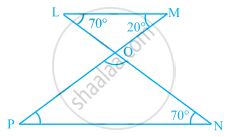Advertisements
Advertisements
प्रश्न
In a triangle, one angle is of 90°. Then ______.
- The other two angles are of 45° each
- In remaining two angles, one angle is 90° and other is 45°
- Remaining two angles are complementary
In the given option(s) which is true?
विकल्प
(i) only
(ii) only
(iii) only
(i) and (ii)
उत्तर
(iii) only
Explanation:
In a right-angled ΔABC
∠B = 90°
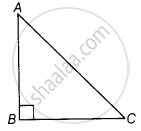
As we know,
∠A + ∠B + ∠C = 180° ......[Angle sum property of a triangle]
⇒ ∠A + 90° + ∠C = 180°
⇒ ∠A + ∠C = 180° – 90° = 90°
Hence, the remaining two angles are complementary.
APPEARS IN
संबंधित प्रश्न
In the given figure, sides QP and RQ of ΔPQR are produced to points S and T respectively. If ∠SPR = 135º and ∠PQT = 110º, find ∠PRQ.
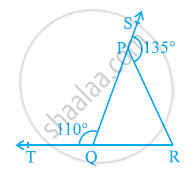
Find the value of the unknown x in the following diagram:

In the following triangle, find the value of x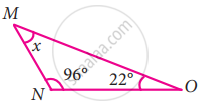
In the following triangle, find the value of x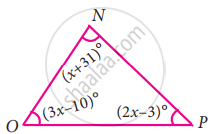
The angles of a triangle are in the ratio 5 : 3 : 7. The triangle is ______.
In the given figure, PB = PD. The value of x is ______.
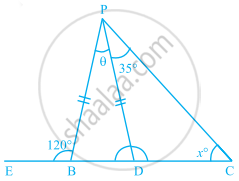
In ∆PQR, if PQ = QR and ∠Q = 100°, then ∠R is equal to ______.
It is possible to have a triangle in which each angle is less than 60°.
I have three sides. One of my angle measures 15°. Another has a measure of 60°. What kind of a polygon am I? If I am a triangle, then what kind of triangle am I?
In the given figure, find the measures of ∠PON and ∠NPO.
